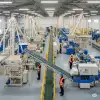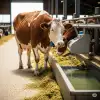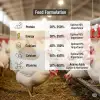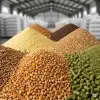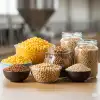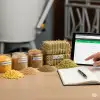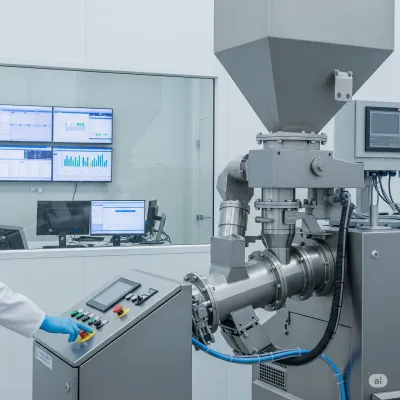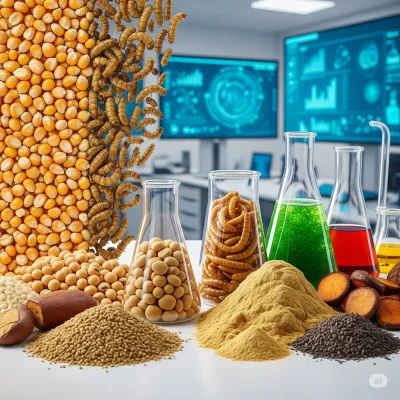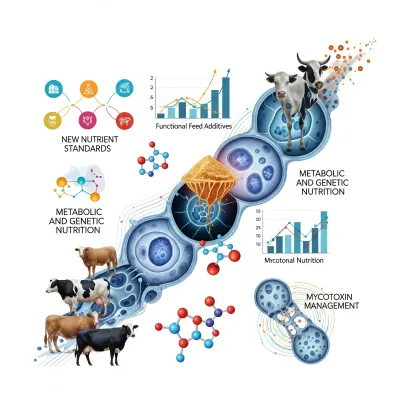Feed Ingredients and Alternative Sources: Take a closer look at the feeds of the future and research findings. From updates in nutrient standards to functional feed additives, from genetic nutrition to mycotoxin management, all the details.
Explore alternative protein and energy sources, quality control and local potential to manage raw material costs and availability in feed production.

Feed Raw Materials and Alternative Sources: The Feeds of the Future
Animal feed production largely depends on raw material costs and availability. This constantly triggers the search for new and cost-effective solutions in feed production. This is precisely where feed consultants step in, researching the feed raw materials of the future.
Raw Material Price Analyses and Market Trends: Understanding the Market
Feed raw material prices constantly change due to many factors such as global market supply-demand balance, climatic conditions, geopolitical developments, and even exchange rates. Feed consultants closely follow these **changes in global and local raw material prices**, **analyze market trends**, and make **future predictions**. These analyses help feed producers optimize their costs by purchasing the right raw materials at the right time. This creates a more stable cost structure for both producers and, ultimately, livestock farmers.
Alternative Protein and Energy Sources: Reducing Dependence on Soy and Corn
High dependence on traditional feed raw materials like soy and corn carries risks in terms of both environmental sustainability and supply security. Therefore, finding **alternative protein and energy sources** is one of the priorities of the feed industry.
- Insect Proteins: Insects, especially mealworms and black soldier fly larvae, have high-quality protein and fat content. They hold great potential due to their sustainability and ability to convert waste materials.
- Algae: Microalgae are rich in both protein and valuable fatty acids. Their rapid growth and carbon dioxide consumption make them an environmentally friendly alternative.
- Yeast Products: By-products like brewer's and baker's yeast are rich sources of protein and B vitamins. They also have properties that support gut health.
- Industrial By-products: Industrial waste such as palm kernel meal, distiller's dried grains with solubles (DDGS - leftover from bioethanol production), and fruit pulps can be used in animal feed after appropriate processing. This contributes to the circular economy while reducing the need for new raw materials.
These alternatives not only reduce dependence on soy and corn but also add variety to feed formulations by offering different nutritional profiles.
Raw Material Quality Control: For Safe and Nutritious Feeds
The quality of raw materials used directly affects the nutritional value of the produced feed and animal health. That's why **raw material quality control** is extremely important. Feed consultants perform analyses of the **nutritional value of raw materials (protein, fat, fiber, vitamin, mineral content)**.
They also work on **antinutritional factors** (e.g., digestion-inhibiting substances like trypsin inhibitors in soybeans), **contaminants (mycotoxins like aflatoxin, heavy metals, pesticide residues)**, and **mold analysis methods**. Thanks to advanced laboratory techniques and rapid test kits, the safety and quality of raw materials are quickly determined, minimizing risks.
Local Raw Material Potential: Evaluating Regional Resources
Considering the fragility of global supply chains and logistical costs, **researching local raw material potential** is of great importance. Feed consultants examine new raw material sources that may be economically accessible and highly nutritious in a specific region.
For example, regionally abundant agricultural waste, seasonal products, or plants with local cultivation potential can be evaluated. This both increases supply chain security and supports the local economy. The use of local raw materials can also reduce transportation costs and, consequently, the carbon footprint of feed production.
These studies on feed raw materials and alternative sources help us build a more sustainable, economical, and resilient feed sector in the future. These innovations will provide a continuous increase in efficiency and quality in animal nutrition.


